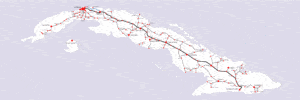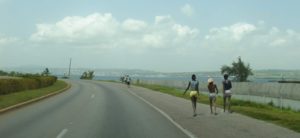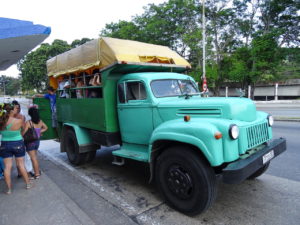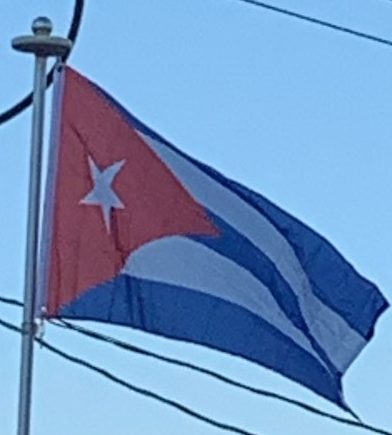The second-largest island is Isla de la Juventud (Isle of Youth) in the Canarreos archipelago, with an area of 2,200 km2 (849 sq mi). Cuba has an official area (land area) of 109,884 km2 (42,426 sq mi). Its area is 110,860 km2 (42,803 sq mi) including coastal and territorial waters.
Transportation:
Cuba built the first railway system in the Spanish empire, before the 1848 start in the Iberian peninsula. While the rail infrastructure dates from colonial and early republican times, passenger service along the principal Havana to Santiago corridor is increasingly reliable and popular with tourists who can purchase tickets in Cuban convertible pesos. As with most public transport in Cuba, the vehicles used are second hand, and the flagship Tren Francés (“French train”) between Havana and Santiago de Cuba is operated by coaches originally used in Europe between Paris and Amsterdam on the ex-TEE. The train is formed by 12 coaches and a Chinese-built locomotive.

With the order of 12 new Chinese locomotives, built specially for Cuban Railways at China Northern Locomotives and Rolling Stock Works, services have been improving in reliability. Those benefiting the most are long distance freight services with the French train Havana-Santiago being the only passenger train using one of the new Chinese locomotives regularly. Various orders are in place for 100 locomotives from China and various freight wagons and passenger coaches.
Metro systems are not present in the island, although a suburban rail network exists in Havana. Urban tramways were in operation between 1858 and 1954, initially as horse drawn systems. In the early 20th century electric trolley or storage battery powered tramways were introduced in seven cities. Of these overhead wire systems were adopted in Havana, Guanabacoa, Matanzas, Cienfuegos, Camagüey and Santiago de Cuba.

The total length of Cuba’s highways is 60,858 km, including:
paved: 29,820 km (including 915 km of expressways)
unpaved: 31,038 km (1999 est.)
There are several national bus companies in Cuba. Viazul operate a fleet of modern and comfortable coaches on longer distance routes designed principally for tourists. Schedules, prices and ticket booking can be done on line, at any of the major international airports or National Terminals across Cuba. There are also other bus lines operated by tourism companies.

AstroBus, a bus service in Cuban National Pesos, designed to bring comfortable air conditioned coaches to Cuban locals at an affordable price. The AstroBus lines operate with modern Chinese YUTONG buses, and are accessible to Cuban Residents of Cuba with their ID Card, and is payable in Cuba Pesos. Routes that have benefited most so far are those from Havana to each of the 13 provincial capitals of the country.
In Havana, urban transportation used to be provided by a colorful selection of buses imported from the Soviet Union or Canada. Many of these vehicles were second hand, such as the 1500 decommissioned Dutch buses that the Netherlands donated to Cuba in the mid-1990s as well as GM fishbowl buses from Montreal. Despite the United States trade embargo, American-style yellow school buses (imported second-hand from Canada) are also increasingly common sights. Since 2008, service on seven key lines in and out of the city is provided by Chinese Zhengzhou Yutong Buses. These replaced the famous camellos (“camels” or “dromedaries”, after their “humps”) trailer buses that hauled as many as two hundred passengers in a passenger carrying trailer.
